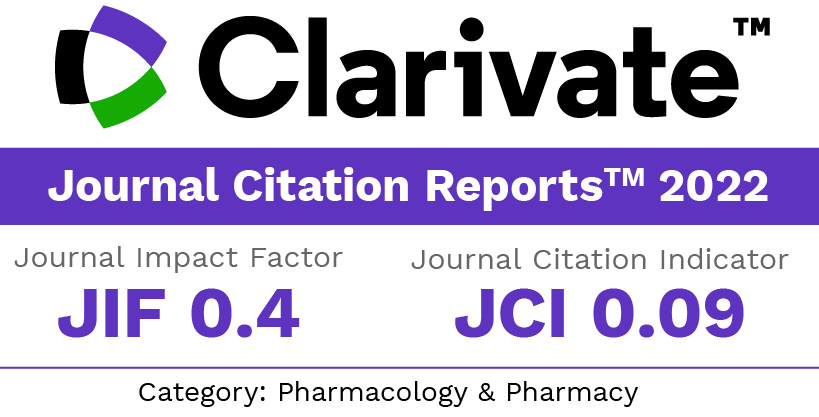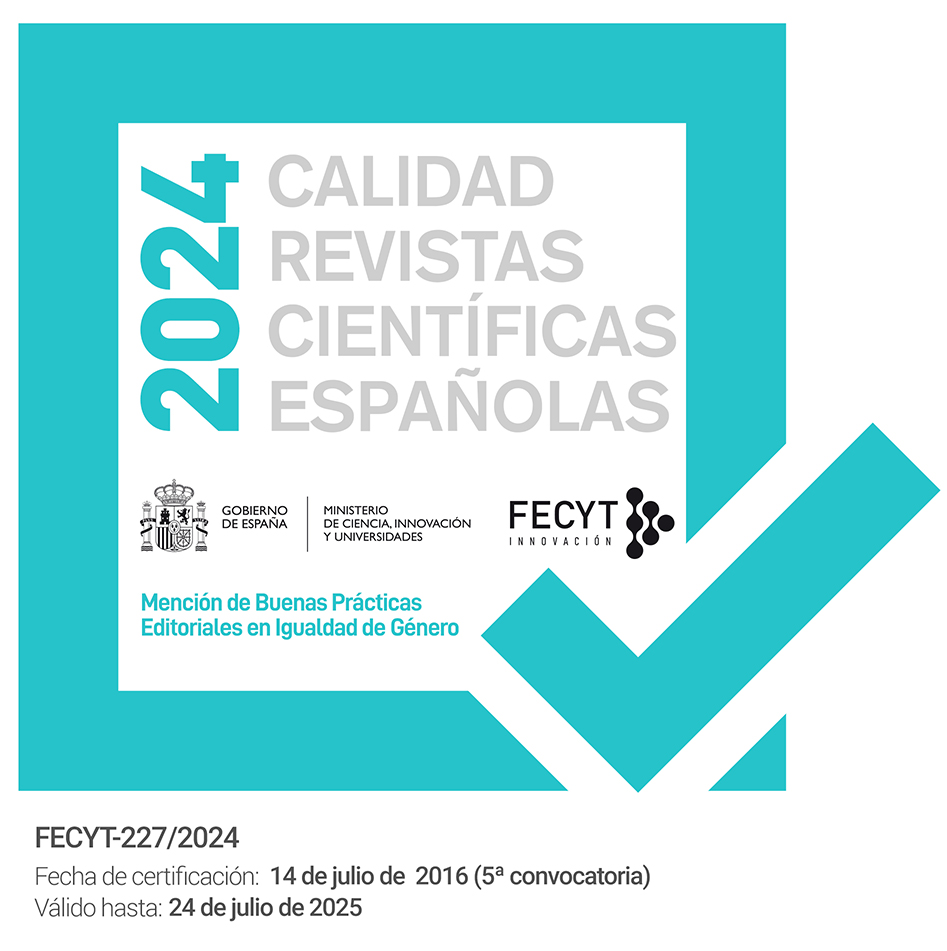Una síntesis ecológica de catecol en H2O2 mediante el uso de catalizadores preparados naturalmente: WEWSA y WECMA
DOI:
https://doi.org/10.30827/ars.v66i4.34536Palabras clave:
Oxidación de Dakin, peróxido de hidrógeno, química verde, WEWSA, WECMA, catecolResumen
Introducción: La química verde proporciona un marco para desarrollar procesos y productos químicos innovadores. Estas directrices abarcan todos los aspectos del ciclo de vida de un proceso, incluyendo las materias primas utilizadas, la eficacia y seguridad de la transformación, y la toxicidad y biodegradabilidad de los productos y reactivos empleados.
Métodos: El uso de la reacción de Dakin de una manera menos dañina para el medio ambiente fue la inspiración para nuestro novedoso enfoque para la producción de catecol. Los arilaldehídos aromáticos pueden transformarse en fenoles a temperatura ambiente con la ayuda de H₂O₂-WEWSA y WECMA.
Resultados: El sistema catalítico debería funcionar idealmente sin necesidad de activación o presencia de catalizadores de metales de transición, ligandos tóxicos, aditivos/promotores, bases, disolventes orgánicos o sustancias similares.
Conclusión: Para evaluar la eficacia de este método, se examinaron varios benzaldehídos hidroxilados sustituidos.
Descargas
Citas
Bora P, Bora B, Bora U. Recent developments in synthesis of catechols by Dakin oxidation. New J Chem. 2021; 45: 17077–17084. Doi: 10.1039/D1NJ03300J
Su J, Noro J, Fu J, Wang Q, Silva C, Cavaco-Paulo A. Enzymatic polymerization of catechol under high-pressure homogenization for the green coloration of textiles. J Clean Prod. 2018; 202: 792–798. Doi: 10.1016/j.jclepro.2018.08.205
Park J, Kelly MA, Kang JX, Seemakurti SS, Ramirez JL, Hatzell MC, et al. Production of active pharmaceutical ingredients (APIs) from lignin-derived phenol and catechol. Green Chem. 2021; 23: 7488–7498. Doi: 10.1039/D1GC02158C
Fei H, Shin J, Meng YS, Adelhardt M, Sutter J, Meyer K, Cohen SM. Reusable oxidation catalysis using metal-monocatecholato species in a robust metal–organic framework. J Am Chem Soc. 2014; 136: 4965–4973. Doi: 10.1021/ja411627z
AbdulKareem-Alsultan G, Taufiq-Yap YH, Asikin-Mijan N, Seenivasagam S, Lee HV. Hydrodeoxygenation of guaiacol, methylguaiacol, and catechol. Adv Hydrotreating Integr Biofuel Prod. 2024; 193–213. Doi: 10.1016/B978-0-443-19076-6.00014-5
Xu R, Liu W, Deng Y, Gao R, Huang N, Zheng Y, et al. Simultaneously regulating charge separation and proton supply-demand in polyphenol amine for hydrogen peroxide photosynthesis. Chem Eng J. 2024; 486: 150137. Doi: 10.1016/j.cej.2024.150137
Gogoi G, Nath JK, Hoque N, Biswas S, Gour NK, Kalita DJ, et al. Single and multiple site Cu(II) catalysts for benzyl alcohol and catechol oxidation reactions. Appl Catal A Gen. 2022; 644: 118816. Doi: 10.1016/j.apcata.2022.118816
Coupé F, Petitjean L, Anastas PT, Caijo F, Escande V, Darcel C. Sustainable oxidative cleavage of catechols for the synthesis of muconic acid and muconolactones including lignin upgrading. Green Chem. 2020; 22: 6204–6211. Doi: 10.1039/D0GC02157A
Zheng LT, Ryu GM, Kwon BM, Lee WH, Suk K. Anti-inflammatory effects of catechols in lipopolysaccharide-stimulated microglia cells: inhibition of microglial neurotoxicity. Eur J Pharmacol. 2008; 588: 106-13. Doi: 10.1016/j.ejphar.2008.04.035
Bressi V, Ferlazzo A, Iannazzo D, Espro C. Graphene quantum dots by eco-friendly green synthesis for electrochemical sensing: Recent advances and future perspectives. Nanomater. 2021; 11: 1120. Doi: 10.3390/nano11051120
Lee DY, Park M, Kim N, Gu M, Kim HI, Kim BS. Sustainable hydrogen peroxide production based on dopamine through Janus-like mechanism transition from chemical to photocatalytic reactions. J Catal. 2022; 411:235–244. Doi: 10.1016/j.jcat.2022.05.017
Yadav S, Jain A, Malhotra P. A review on the sustainable routes for the synthesis and applications of cuprous oxide nanoparticles and their nanocomposites. Green Chem. 2019; 21: 937–955. Doi: 10.1039/C8GC03303J
Dutta S, Yadav M, Sharma RK. Implementation of Green Chemistry: Real-World Case Studies. Green Chem Beginners. 2021; 205–261. Doi: 10.1201/9781003180425
Su J, Fu J, Wang Q, Silva C, Cavaco-Paulo A. Laccase: a green catalyst for the biosynthesis of poly-phenols. Crit Rev Biotechnol. 2018; 38: 294–307. Doi: 10.1080/07388551.2017.1354353
Surana KR, Bhavar SV, Sonawane VN, Patil DM, Sonawane DD, Mahajan SK. Tap Water and RO Outlet Water a Novel Greener Route to Catechol Synthesis in H2O2. Asian J Green Chem. 2023; 7: 189–198. Doi: 10.22034/ajgc.2023.390693.1389
Tang Z, Zhang M, Xiao H, Liu K, Li X, Du B, et al. A green catechol-containing cellulose nanofibrils-cross-linked adhesive. ACS Biomater Sci Eng. 2022; 8: 1096–1102. Doi: 10.1021/acsbiomaterials.1c01494
Saikia B, Borah P. A new avenue to the Dakin reaction in H2O2–WERSA. RSC Adv. 2015; 5: 105583–105586. Doi: 10.1039/C5RA20133K
Puertas-Bartolomé M, Benito-Garzón L, Fung S, Kohn J, Vázquez-Lasa B, San Román J. Bioadhesive functional hydrogels: Controlled release of catechol species with antioxidant and antiinflammatory behavior. Mater Sci Eng C. 2019; 105: 110040. Doi: 10.1016/j.msec.2019.110040
Al-Hammashi F, Momenbeik F. Polycatechol coated cigarette filter as a sorbent for microextraction by packed sorbent of acidic non-steroidal anti-inflammatory drugs (NSAIDs) from wastewater samples. Microchem J. 2025; 208: 112298. Doi: 10.1016/j.microc.2024.112298
Descargas
Publicado
Cómo citar
Número
Sección
Licencia
Derechos de autor 2025 Khemchand Surana, Sagar Bhawar, Sunil Mahajan, Deepak Sonawane

Esta obra está bajo una licencia internacional Creative Commons Atribución-NoComercial-CompartirIgual 4.0.
Los artículos que se publican en esta revista están sujetos a los siguientes términos en relación a los derechos patrimoniales o de explotación:
- Los autores/as conservarán sus derechos de autor y garantizarán a la revista el derecho de primera publicación de su obra, la cual se distribuirá con una licencia Creative Commons BY-NC-SA 4.0 que permite a terceros reutilizar la obra siempre que se indique su autor, se cite la fuente original y no se haga un uso comercial de la misma.
- Los autores/as podrán adoptar otros acuerdos de licencia no exclusiva de distribución de la versión de la obra publicada (p. ej.: depositarla en un archivo telemático institucional o publicarla en un volumen monográfico) siempre que se indique la fuente original de su publicación.
- Se permite y recomienda a los autores/as difundir su obra a través de Internet (p. ej.: en repositorios institucionales o en su página web) antes y durante el proceso de envío, lo cual puede producir intercambios interesantes y aumentar las citas de la obra publicada. (Véase El efecto del acceso abierto).
























